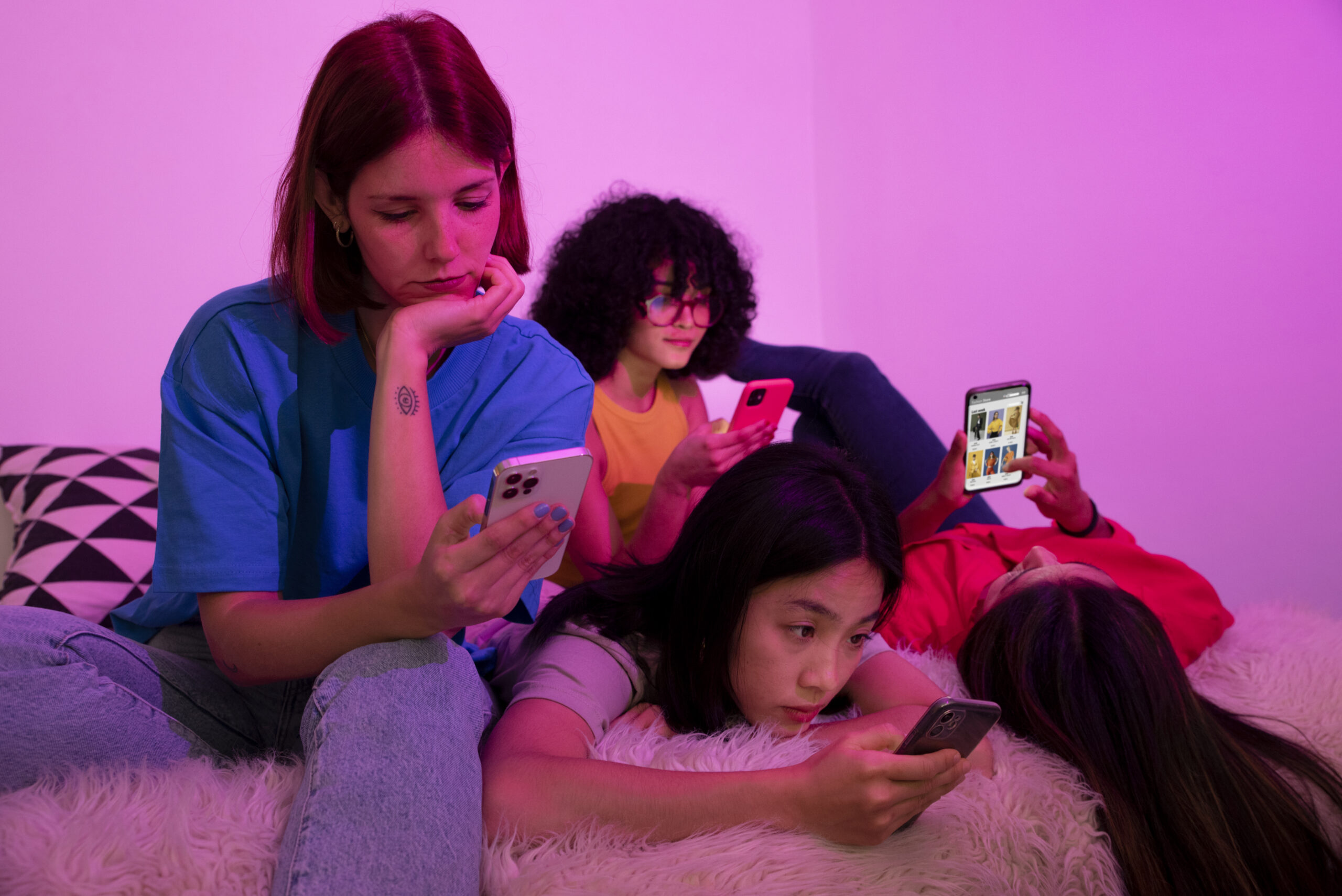Families today live under one roof, but many feel far apart. Phones, tablets, and endless notifications compete for attention. Instead of face-to-face talks, people scroll through feeds. The issue is no longer whether technology helps us. It’s whether we control it or it controls us. More than ever, it feels like a daily battle of families vs screens.
The truth is, technology isn’t going away. But if families don’t learn to manage it wisely, they risk losing the very thing that makes a home warm—intimacy, laughter, and real connection.
Families vs Screens: Living Together, Yet Apart
Picture this: a family sitting together after dinner. The room is quiet, but not peaceful. Every head is bent down—one child is gaming, another is scrolling, and a parent is catching up on messages. They are in the same room, but not really together.
This is a common scene. Many parents say their children would rather chat online than talk at the table. Couples admit their “together time” means sitting next to each other while glued to different screens. Families that once shared meals, games, and stories now share only Wi-Fi.
The result? Intimacy weakens. Eye contact fades. Simple moments of laughter and warmth get replaced by scrolling. Relationships turn distant—not because love is gone, but because attention has been stolen.
When Convenience Turns Costly
Technology promised to make life easier, and in many ways, it has. Parents work from home. Children study online. Loved ones stay connected across borders. But ease comes with a hidden cost.
Think of a father who works remotely. He is physically present, but his laptop is always open. His children see him every day, yet they rarely have his full attention. They feel ignored, even though he is only a few feet away.
Or imagine a couple who once talked for hours before bed. Now, they reach for their phones instead. Notifications replace affection. Social media feels more urgent than listening to each other’s stories.
Technology is not the enemy. The danger comes when it steals silence, focus, and presence. Families often trade intimacy for convenience without even noticing. That is how technology becomes a thief.

A Silent Crisis Across Generations
This problem affects every generation.
– Children grow up measuring their worth by likes and followers. Real family values often take a back seat.
– Teenagers hide behind screens to avoid hard conversations. They share their struggles online but stay silent at home.
– Young couples compare their love to polished, filtered versions they see on social media.
– Parents are pulled between work emails, calls, and home life, leaving little energy for connection.
This is a silent crisis. Not a crisis of money or resources, but of attention. The best gift we can give each other is presence. Sadly, that is the very thing technology threatens to take away.
How Families Can Reclaim Intimacy
The good news? Families are not powerless. Digital habits may weaken bonds, but intentional choices can strengthen them again.
1. Create Tech-Free Zones – Decide that some places—like the dining table or bedroom—are free from screens. It sounds small, but it creates space for real talks.
2. Plan “Unplugged” Time – Pick a night for a family walk, a game night, or cooking together. Families who do this say laughter comes back. Even 30 minutes of screen-free connection each day makes a big difference.
3. Practice Presence – Look into each other’s eyes. Listen without checking a phone. Show that loved ones matter more than any alert. Presence is not about being in the same room—it’s about giving your full attention.
4. Lead by Example – Children copy what parents do. If parents put away their phones, children follow. Spouses who choose each other set a strong standard of loyalty and respect.
5. Create Family Rituals – Bedtime stories, morning chats, or shared reflections make families feel connected. Rituals remind everyone that they belong. These little habits, done often, add up to deep intimacy.
Real Stories, Real Lessons
A mother shared how her toddler once pulled a phone out of her hand just to get attention. A teenager admitted that vacations with family are spent in silence because everyone is on a device. A husband confessed that he almost lost his marriage because online chats felt easier than real ones.
But there are also success stories. Families who started with just one hour of “no phones” each evening saw a big change. Dinner tables became noisy again—with laughter, jokes, and real conversations. Couples talked more. Children felt heard.
The lesson is clear: families don’t need to ban technology. They need to balance it. Screens may entertain, but they cannot replace eye contact, hugs, or the sound of shared laughter.
Building Homes That Outlast Distractions
At the heart of every family is the same desire: to feel safe, loved, and connected. Technology can give the illusion of closeness, but without care, it leaves hearts empty.
Families who set boundaries and choose presence build stronger homes. The question is not whether technology will grow—it will. The real question is whether families will grow stronger in protecting what matters most. Intimacy is not automatic. It is built, step by step, choice by choice.

In conclusion, digital distractions may be strong, but they are not stronger than love, attention, and discipline. Families that unplug, even for a while, often rediscover intimacy waiting right beneath the glow of the screen.
The real change begins when every family member drops their phone—not by force, but by choice—to have a real conversation. In those simple moments, laughter replaces silence, distance turns to closeness, and love returns to the center of the home. In the battle of families vs screens, intimacy wins when presence becomes the priority. And that victory, small as it may seem, is what turns a house into a true home.
If this article has inspired you, don’t just read and scroll away. Take a moment to like, share, and drop a comment below. Share it with someone who needs to hear this message, and let’s continue to build stronger homes together. For more, follow me @sojiolateru.




